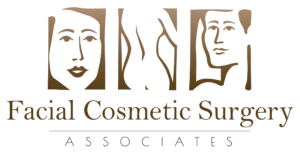What to do if they are stretched or torn:
Once an earlobe has been pierced, it is repeatedly exposed to trauma and can easily be partially or completely torn. The size, style and weight of an earring can contribute to “stretching” the opening in the earlobe and earrings that are easily caught or grasped by a child may also put the earlobe at greater risk.
Whether the opening for an earring as enlarged excessively or has been completely torn through, it is possible to repair the earlobe. There are several methods by which this can be done. Each is designed to repair the defect in a manner that will allow as normal an appearing earlobe as possible and leave a patent opening so that earrings can later be worn.
Because simply suturing the two halves together may leave a notch or dimple at the lower edge of the earlobe the repairs usually involve techniques that allow the two halves to be joined together like pieces of a jigsaw puzzle. This helps to maintain a normal contourto the lower portion of the earlobe and a smooth, flat surface on the front. These techniques also lend more strength to the repair.
Following repair, a large, looped suture may be left in the opening for 7-10 days to maintain the opening without insertion of an earring. The surgeon may then request that only light stud earrings be worn for several months to allow the repaired earlobe to heal before it is stressed again.
If the damage to the earlobe has been extensive and the earlobe itself is consequently quite then, the surgeon may suggest complete closure of the enlarged opening and re-piercing the earlobe in a slightly different position at a later date to avoid repeated trauma in the same area. If a person no longer wishes to wear pierced earrings, it is also possible to repair the earlobe and completely eliminate the opening.
A word of caution about piercing the ear through the cartilage above the earlobe. It has become a fashion statement to pierce the ears through the cartilage framework of the ear, often in several different areas. This can be a dangerous practice because there is a increased risk of infection to the cartilage framework. Infection of cartilage can be difficult to treat resulting in permanent loss of cartilage and a deformed ear. Should this happen, there are reconstructive procedures to improve the deformity, but it is unlikely that the ear will ever be good as new.
Earlobes that are themselves too large or stretched can also be improved. Through a relatively simple procedure the size of the earlobe can be reduced by excising the excess skin and creating a smaller, natural appearing earlobe.
This procedure is usually done to both sides in order to maintain a symmetrical appearance. It may also be necessary to reposition the pierced ear holes at this time dependingon their location.
The procedures used to improve such problems are usually performed using local anesthesia in either the surgeons office or in an outpatient surgery setting. The cost varies depending on the extent of the problem and the procedure necessary to achieve the most cosmetic repair. Consulting your facial plastic surgeon will allow you to learn what method of repair is best for your particular situation.


